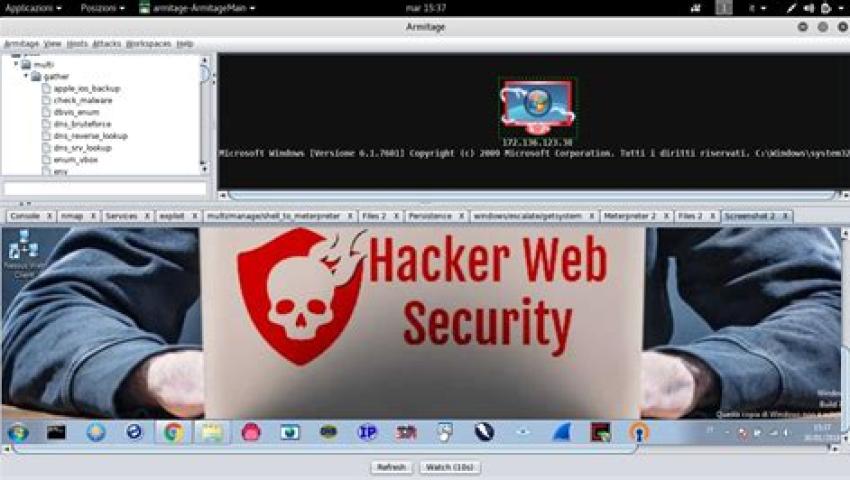Simulating real-world cyberattacks in a controlled environment is a vital practice in the world of cybersecurity. It enables organizations to test their defenses, evaluate incident response capabilities, and identify potential vulnerabilities without exposing critical systems or data to actual threats. By conducting such simulations, companies can gain a deeper understanding of how their systems would respond to various attacks, which can significantly improve their security posture.
In this article, we’ll explore how to simulate real-world attacks effectively, step by step, ensuring that it’s done safely, responsibly, and with measurable outcomes. We'll provide practical examples and tools that can help you simulate attacks in a controlled manner.
Step 1: Define the Scope of the Simulation
Why It’s Important: Before conducting any attack simulation, it’s crucial to define the scope of the test. This step ensures that the attack remains contained and targeted, preventing unintended disruptions to production systems or sensitive data.
How to Do It:
- Agree on In-Scope Targets: Identify which systems, applications, or networks you want to test. For instance, you may want to test the security of your web application but exclude your critical internal databases from the simulation.
- Get Authorization: Make sure you have written consent from stakeholders and senior management. Clear authorization is essential for both legal and ethical reasons.
- Set Clear Objectives: Decide on the goals of the simulation. Is it to test your detection capabilities? Evaluate the effectiveness of your incident response plan? Or assess the overall resilience of your network?
Example: If you're testing the effectiveness of your firewall, you may choose to simulate a Distributed Denial-of-Service (DDoS) attack on a public-facing server, while excluding internal services from the simulation.
Step 2: Choose the Type of Attack to Simulate
Why It’s Important: There are numerous types of cyberattacks, each with its own characteristics. Selecting the right attack vectors for simulation will allow you to test specific areas of your security posture.
How to Do It:
- Select Realistic Attack Scenarios: Choose attack methods that are most likely to be encountered in real-world situations. This could include:
- Phishing Attacks: Test your organization’s susceptibility to social engineering attacks.
- Ransomware: Simulate a ransomware attack to evaluate your backup and recovery procedures.
- Denial of Service (DoS): Simulate a DoS or DDoS attack to test your network’s resilience.
- Web Application Attacks: Use techniques like SQL injection, Cross-Site Scripting (XSS), or Cross-Site Request Forgery (CSRF) to test your web application’s defenses.
- Prioritize the Most Relevant Threats: Consider the most prevalent threats faced by your industry or organization and design your simulation around those.
Example: If your organization is an online retailer, you might simulate an SQL injection attack on your website’s login page to test for vulnerabilities that could lead to data breaches.

Step 3: Set Up a Controlled Environment (Test Lab)
Why It’s Important: Performing attack simulations in a controlled environment is critical for minimizing risks. A dedicated test lab allows you to safely carry out attacks without impacting production systems.
How to Do It:
- Create a Replicated Network Environment: Set up a separate test environment that mirrors your production systems, including servers, applications, and network configurations. You can use virtualization technologies like VMware or Hyper-V to easily replicate production environments.
- Isolate Test Systems: Ensure that the test systems are completely isolated from live networks to avoid accidental damage or data breaches.
- Implement Logging and Monitoring: Enable detailed logging and monitoring on all systems in the test lab. This allows you to track the attack’s progress, detect defensive measures in action, and collect valuable data for analysis.
Example: Use virtual machines (VMs) to replicate your network infrastructure. For instance, replicate a web server, an internal database, and a network firewall, each with configurations that match the live system as closely as possible.
Step 4: Use Penetration Testing Tools and Techniques
Why It’s Important: Penetration testing tools help automate and streamline the process of simulating real-world attacks. By using industry-standard tools, you can conduct comprehensive assessments and ensure that the simulated attacks are both realistic and thorough.
How to Do It:
- Use Offensive Security Tools: Leverage widely-used penetration testing tools to simulate attacks. Some popular tools include:
- Metasploit: A framework for testing vulnerabilities and simulating exploits.
- Nmap: A powerful tool for network discovery and vulnerability scanning.
- Burp Suite: A web application testing tool used to find vulnerabilities like XSS and SQL injection.
- Aircrack-ng: A suite of tools for auditing wireless networks, ideal for testing Wi-Fi security.
- Wireshark: A network protocol analyzer to capture and analyze network traffic.
- Simulate Exploits: Use the tools to simulate exploitation of vulnerabilities. For example, you might use Metasploit to exploit a known vulnerability in a web application.
Example: Using Metasploit, you could simulate an exploit against a vulnerable application by selecting an appropriate payload, setting it up to connect back to your attacking machine, and then attempting to exploit the vulnerability.
Step 5: Simulate Social Engineering Attacks
Why It’s Important: Social engineering attacks often target human weaknesses rather than technological vulnerabilities. Simulating these types of attacks is crucial for testing employee awareness and preparedness.
How to Do It:
- Phishing Campaigns: Simulate phishing attacks by crafting convincing emails designed to trick employees into clicking malicious links or downloading attachments. Tools like Gophish can automate phishing campaigns.
- Vishing (Voice Phishing): Try simulating phone-based attacks where an attacker impersonates a trusted figure (like IT support) and tries to gather sensitive information.
- Pretexting: Simulate scenarios where attackers attempt to gain access to systems by pretending to be someone else, such as a vendor or service technician.
Example: Use a phishing simulation tool like Gophish to send emails with malicious attachments to employees, tracking who opens the email and who clicks the link. This can help measure the effectiveness of your organization’s security awareness training.
Step 6: Monitor, Analyze, and Record the Results
Why It’s Important: Real-world attack simulations generate valuable data that can help assess the effectiveness of your security measures. Monitoring the attack’s progress allows you to measure the response time, detect the success of countermeasures, and identify potential weaknesses.
How to Do It:
- Monitor System Logs: Keep an eye on system logs, application logs, and network traffic during the simulation. Use tools like Splunk or ELK Stack to centralize and analyze logs in real-time.
- Track Detection and Response: Evaluate how well your intrusion detection systems (IDS) and security monitoring tools are performing. Are they catching the simulated attack, or are they being bypassed?
- Record the Process: Document each step of the attack, including any vulnerabilities discovered, exploitation attempts, and the actions taken by your defenses. This documentation is essential for post-simulation analysis.
Example: During a simulated DDoS attack on a web server, track how long it takes for the system to detect the attack and whether the mitigation tools (e.g., a Web Application Firewall) are able to block malicious traffic.
Step 7: Review and Improve
Why It’s Important: Once the simulation is complete, it’s important to review the findings and use them to improve your organization’s security posture. This iterative process helps identify areas for improvement and strengthens defenses for future attacks.
How to Do It:
- Post-Simulation Analysis: Analyze the results of the attack, including what defenses were bypassed, which vulnerabilities were exploited, and how long it took for the organization to respond.
- Enhance Training: Based on the results of social engineering tests, provide additional training for employees to recognize phishing attempts, vishing, and other common social engineering tactics.
- Update Defenses: Address any weaknesses identified during the test. This could involve patching software vulnerabilities, improving incident response protocols, or enhancing the configuration of security tools.
Example: If your IDS missed detecting certain attack traffic during the simulation, consider tuning its detection rules or upgrading to a more robust IDS solution. Additionally, if employees fell victim to phishing attempts, invest in more frequent and engaging security awareness training.
Conclusion
Simulating real-world cyberattacks in a controlled environment provides organizations with a powerful way to test their defenses, evaluate their security measures, and prepare for potential threats. By following these steps—defining the scope, selecting appropriate attacks, creating a controlled environment, using penetration testing tools, simulating social engineering, monitoring results, and continually improving—you can perform a comprehensive simulation that enhances your organization’s ability to detect, respond to, and mitigate cyber threats effectively.



